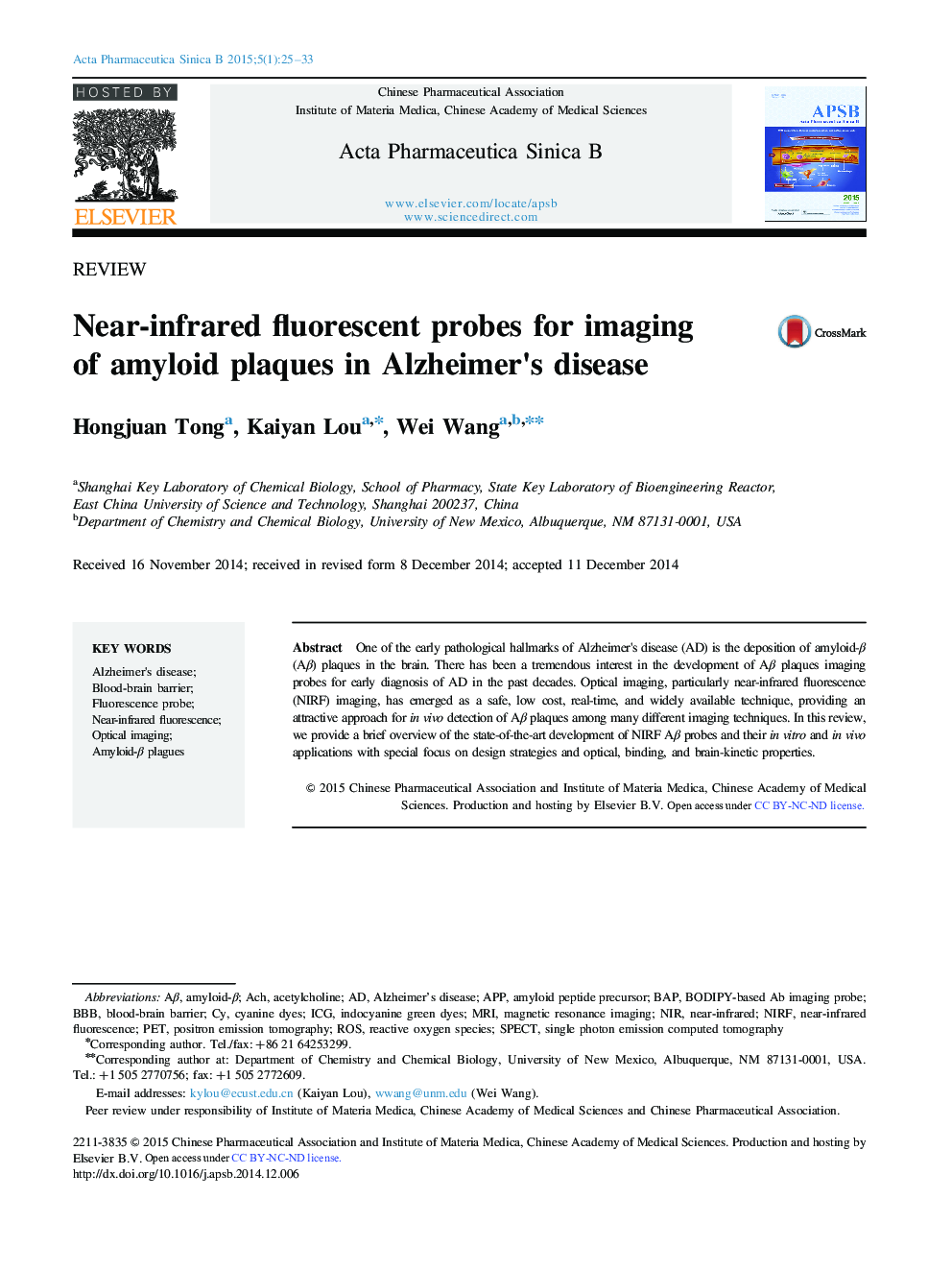| Article ID | Journal | Published Year | Pages | File Type |
|---|---|---|---|---|
| 2474745 | Acta Pharmaceutica Sinica B | 2015 | 9 Pages |
One of the early pathological hallmarks of Alzheimer׳s disease (AD) is the deposition of amyloid-β (Aβ) plaques in the brain. There has been a tremendous interest in the development of Aβ plaques imaging probes for early diagnosis of AD in the past decades. Optical imaging, particularly near-infrared fluorescence (NIRF) imaging, has emerged as a safe, low cost, real-time, and widely available technique, providing an attractive approach for in vivo detection of Aβ plaques among many different imaging techniques. In this review, we provide a brief overview of the state-of-the-art development of NIRF Aβ probes and their in vitro and in vivo applications with special focus on design strategies and optical, binding, and brain-kinetic properties.
Graphical AbstractThe review highlights the recent development of near-infrared (NIR) fluorescent probes for the detection of amyloid plaques in Alzheimer’s disease (AD), an emerging area in molecular imaging and disease diagnosis. This mini review focuses on the probe-design strategy, as well as binding- and brain- kinetic properties of 6 classes of NIR imaging probes. Their pros and cons are also briefly discussed.Figure optionsDownload full-size imageDownload as PowerPoint slide
